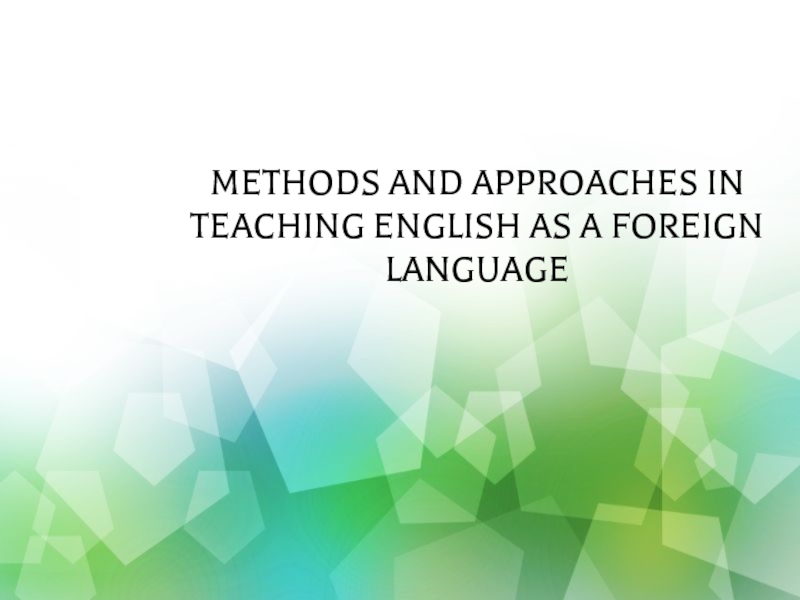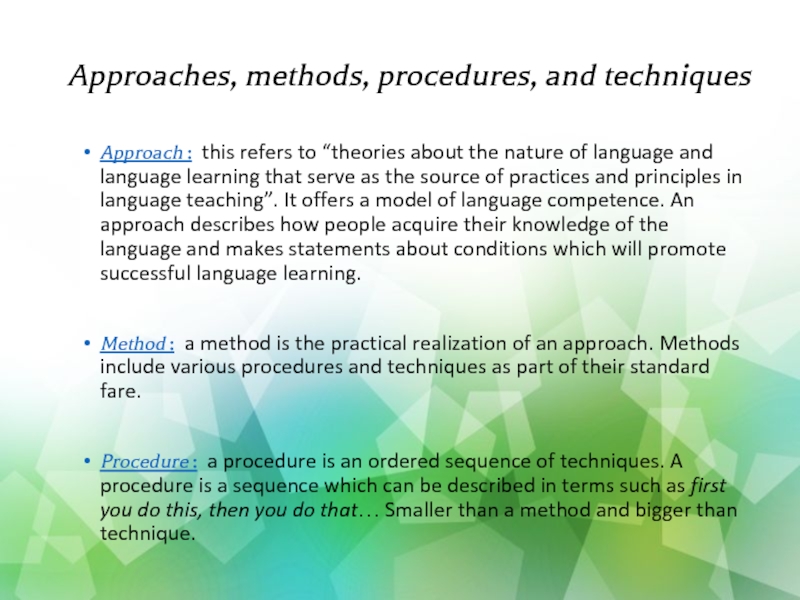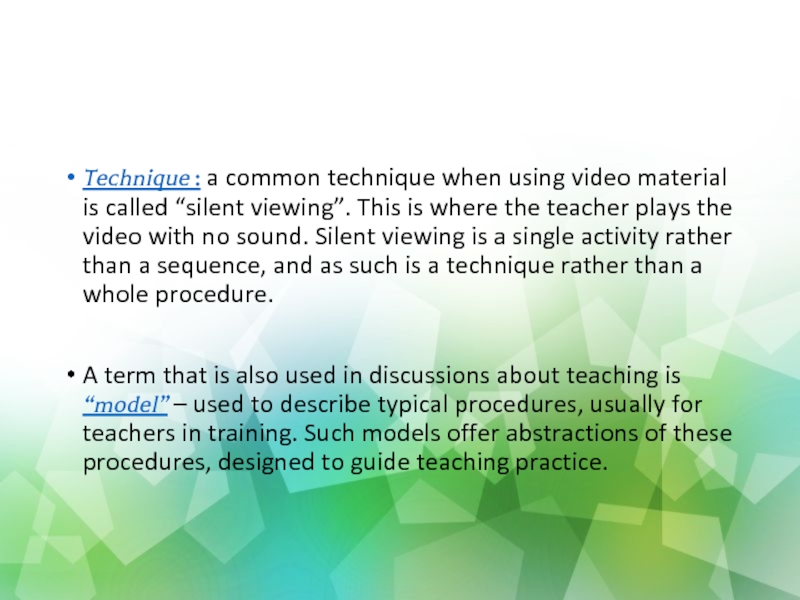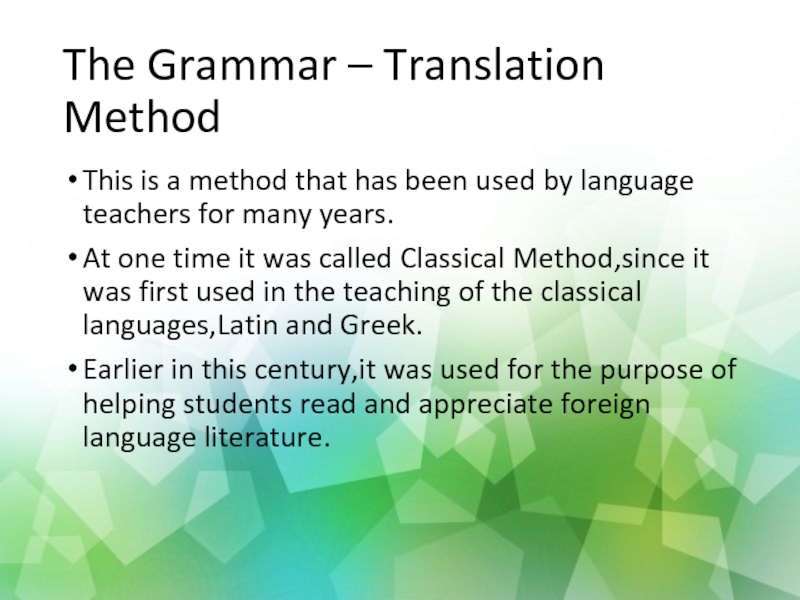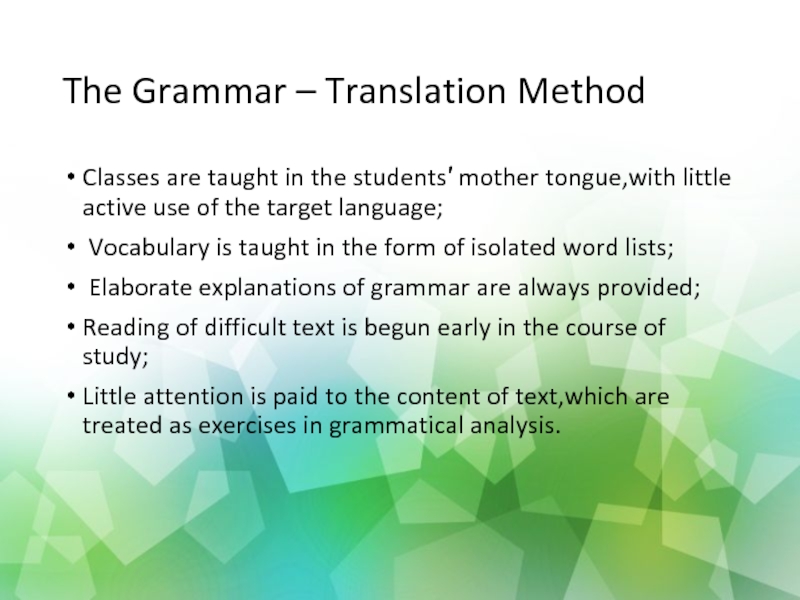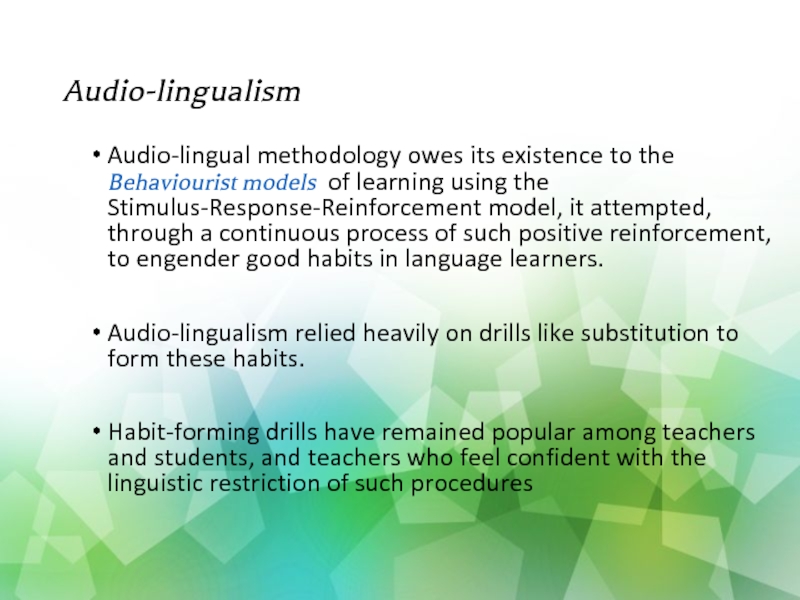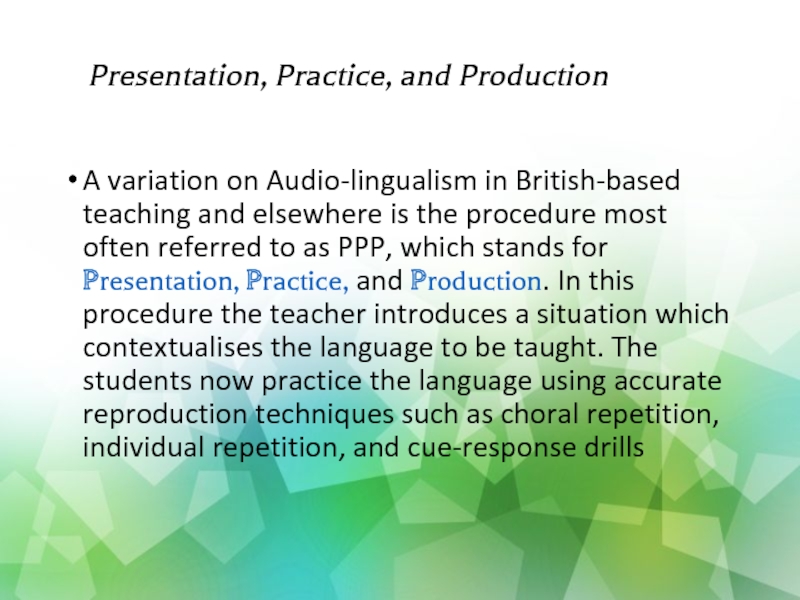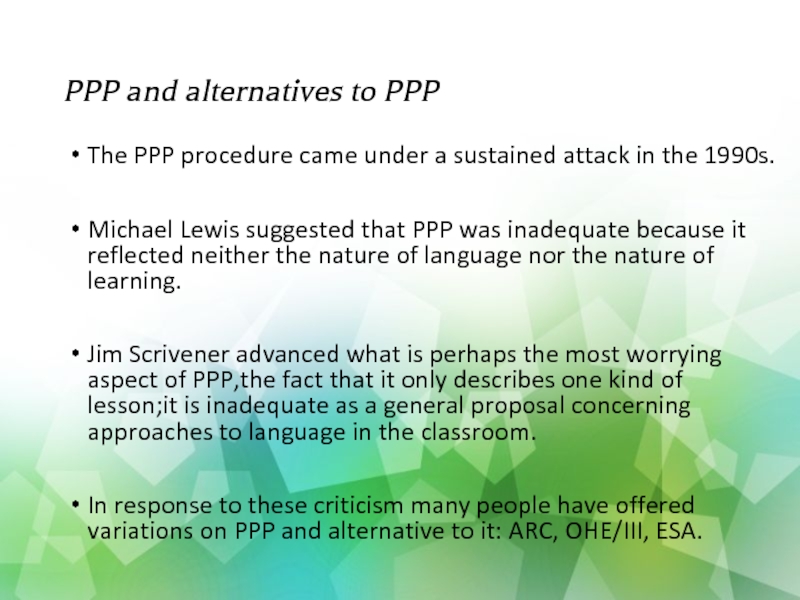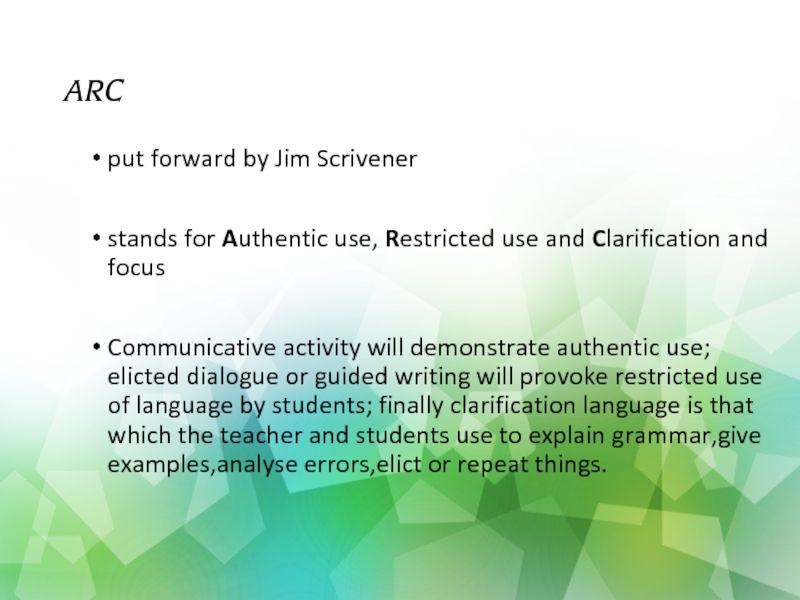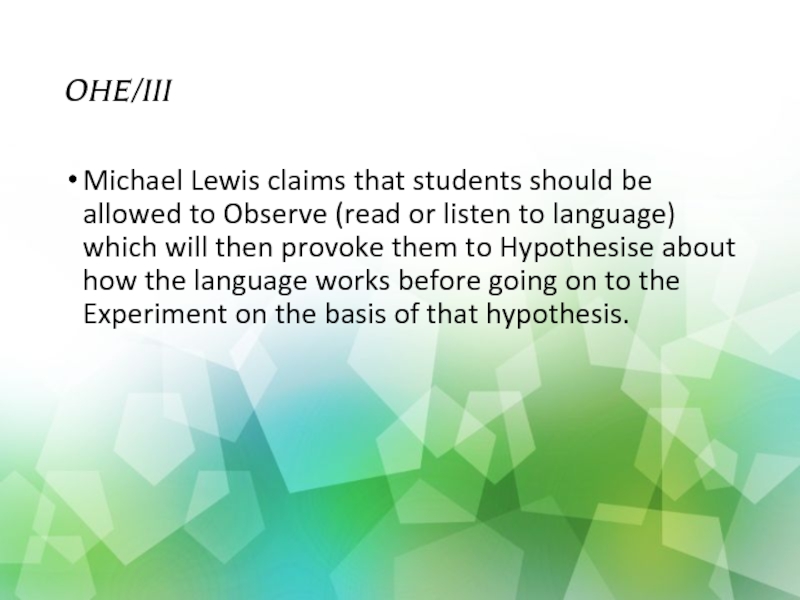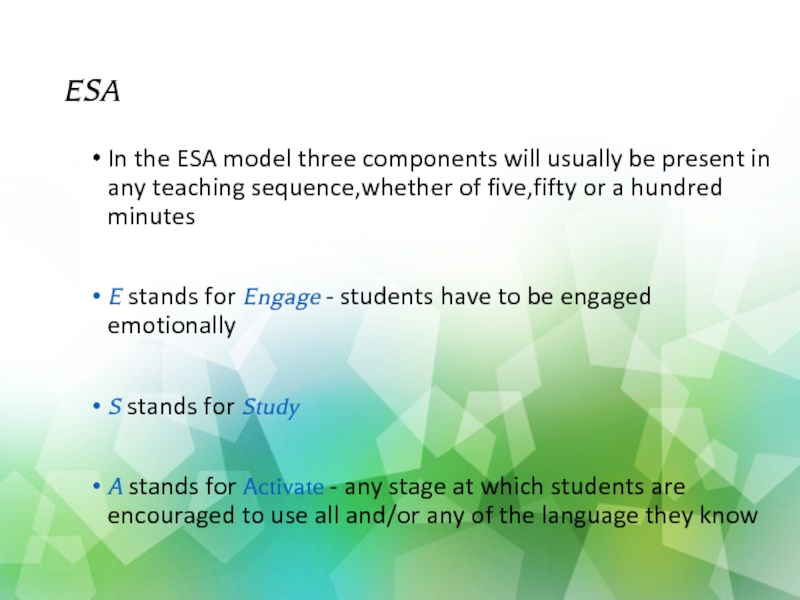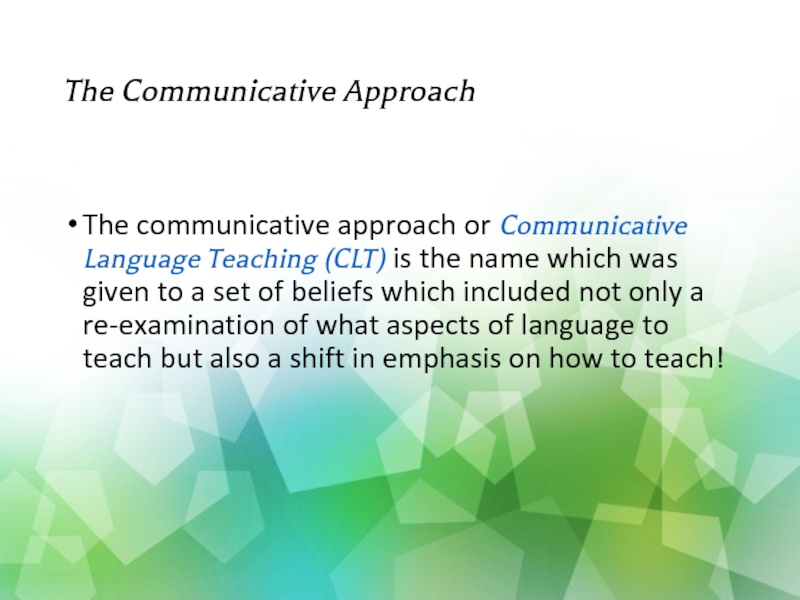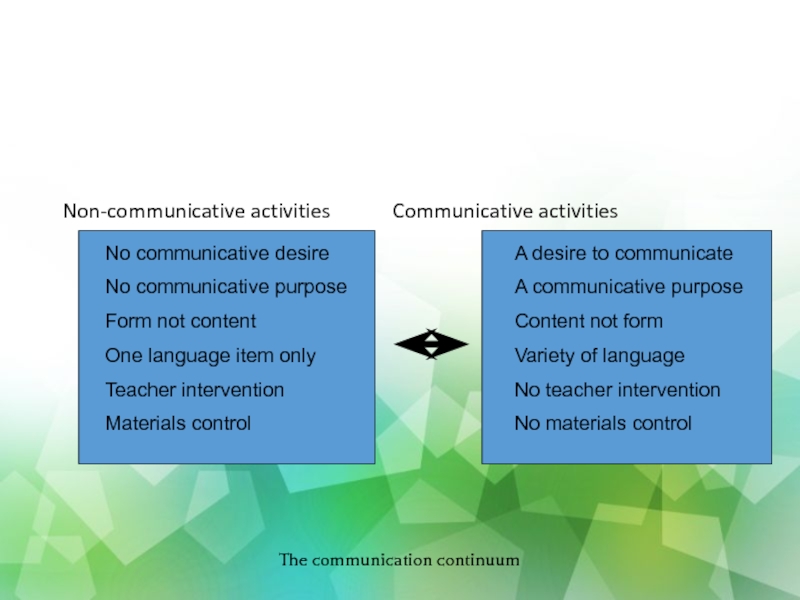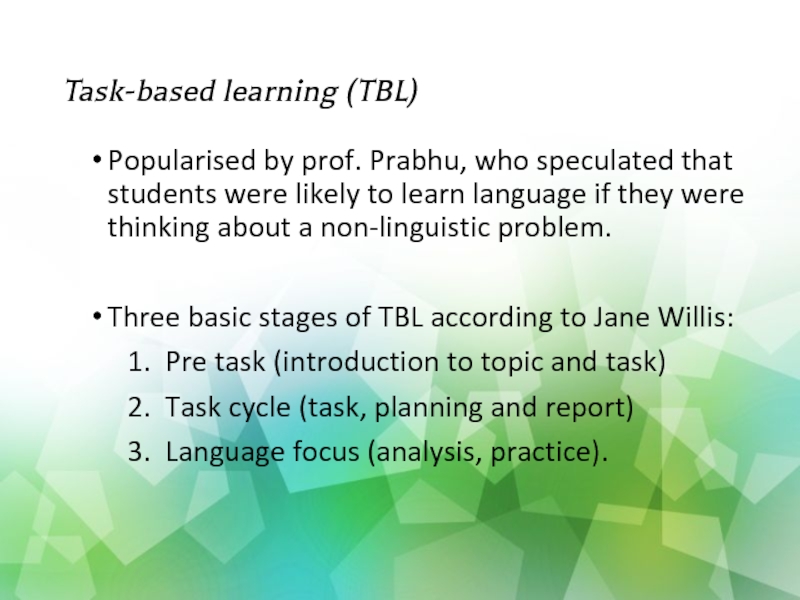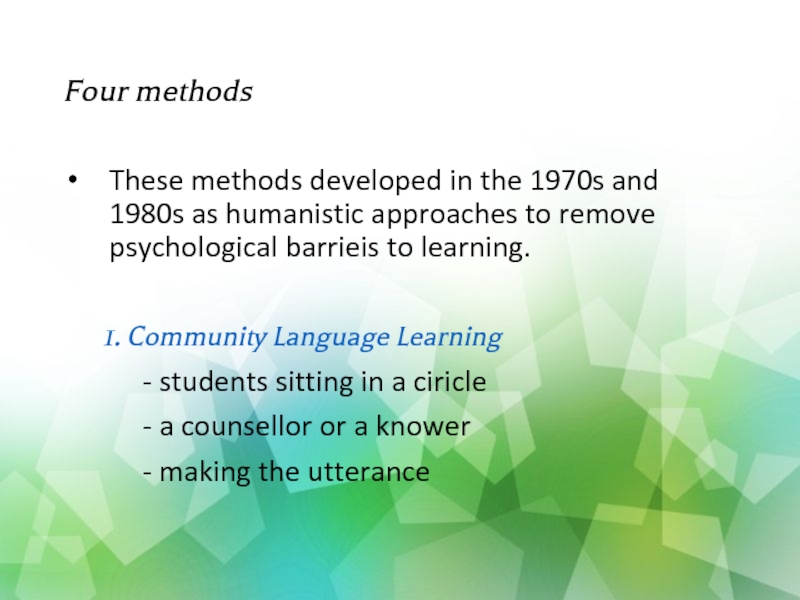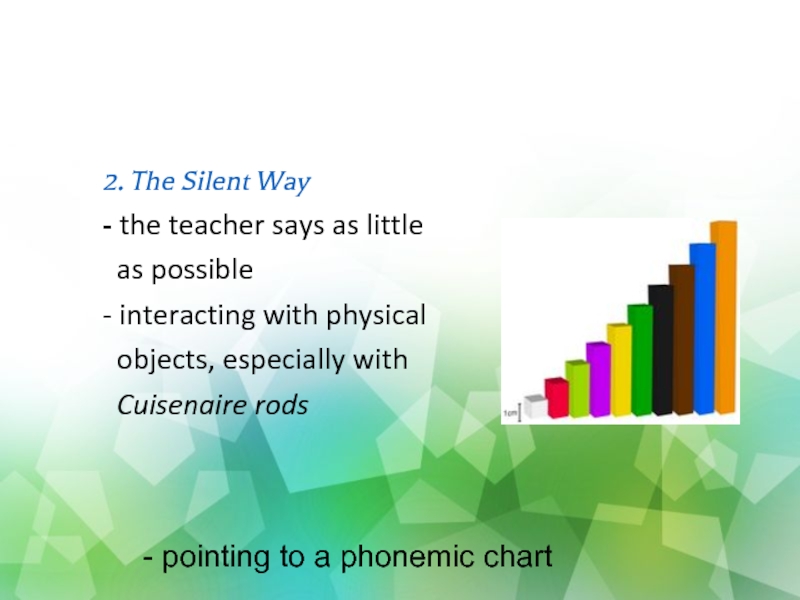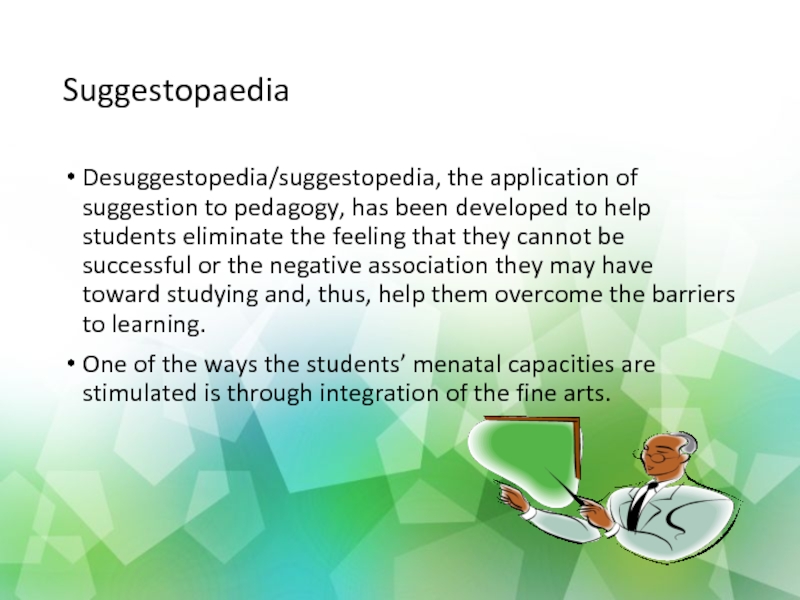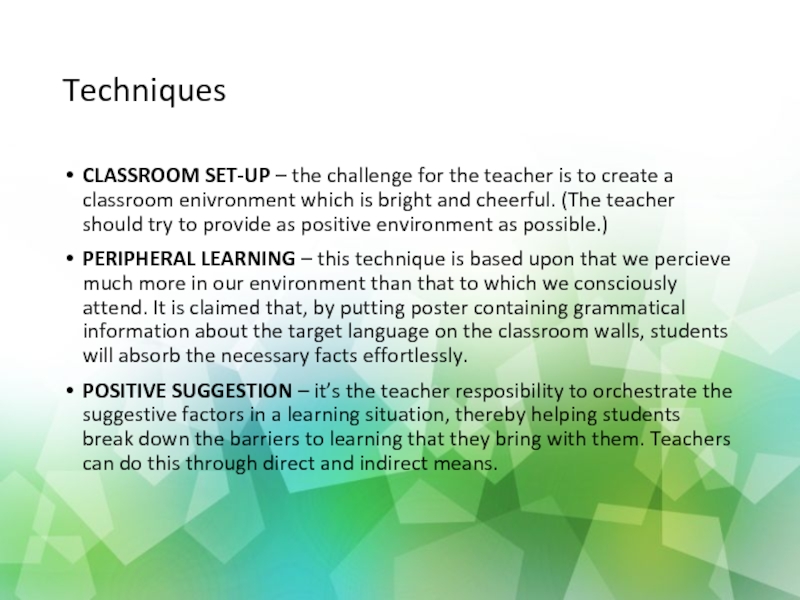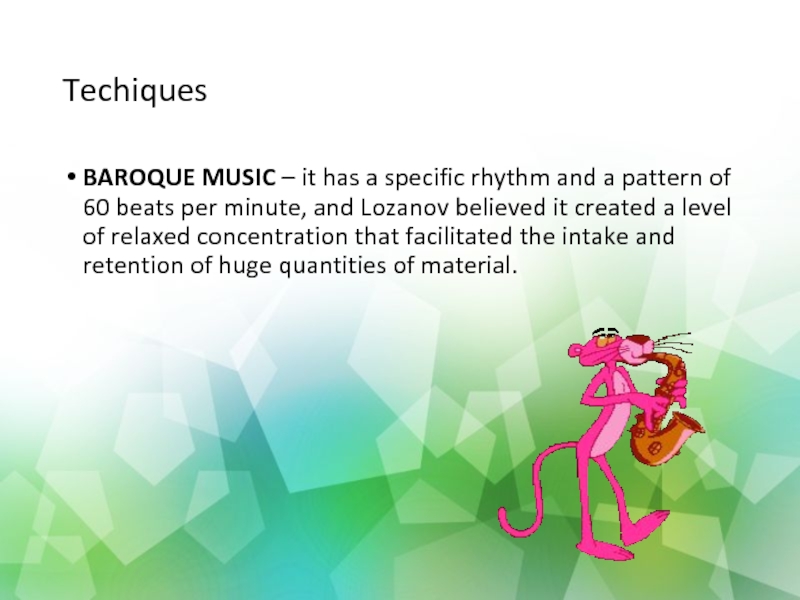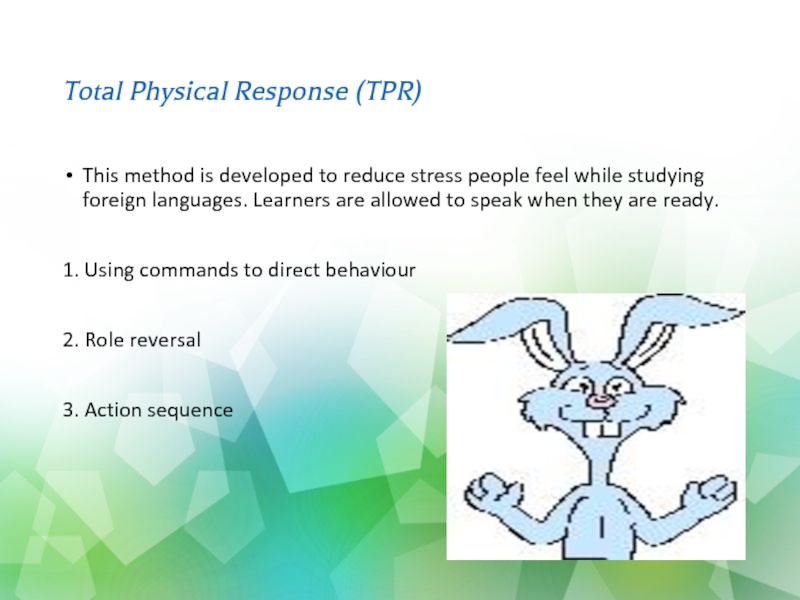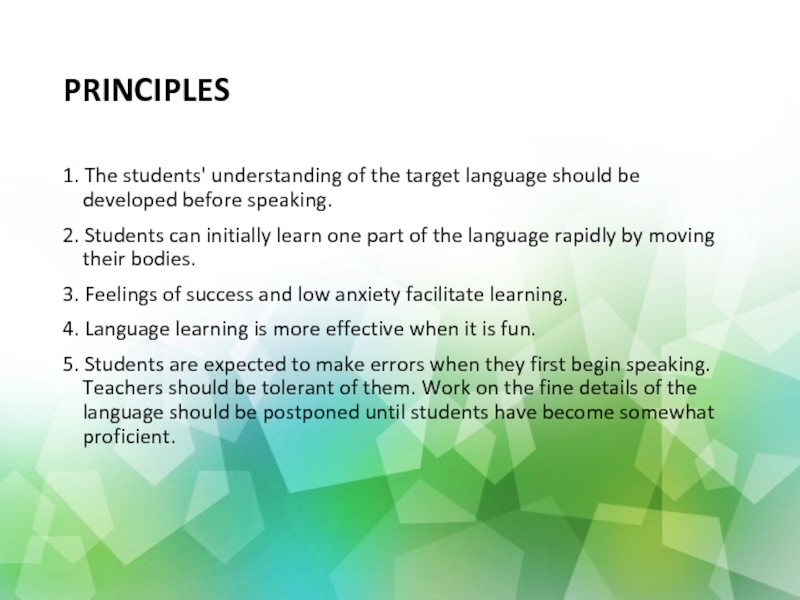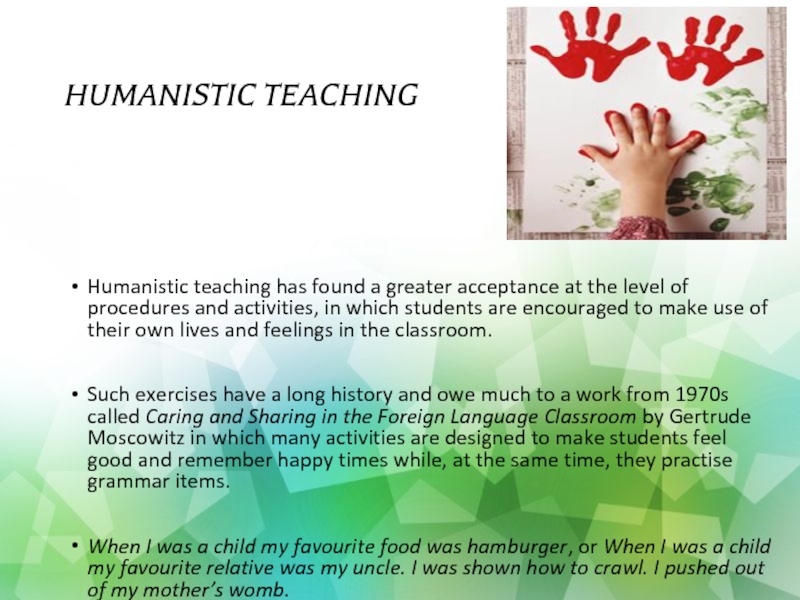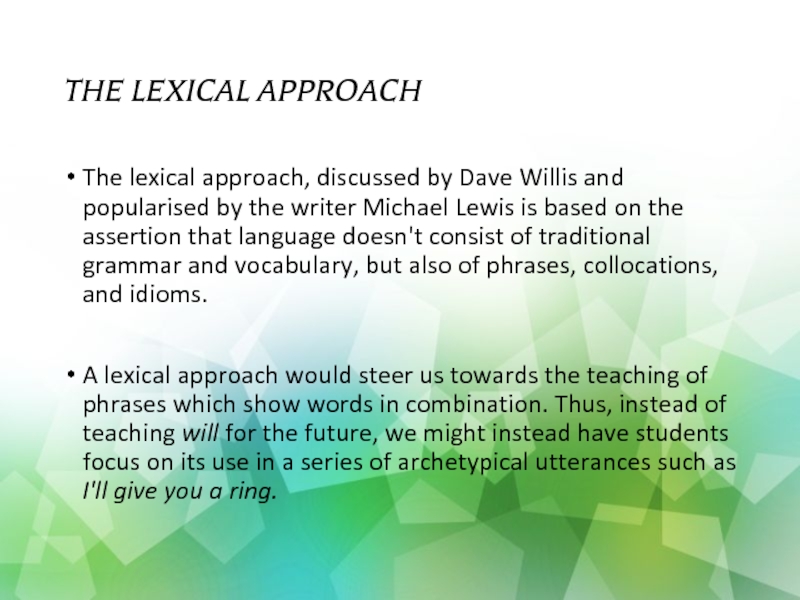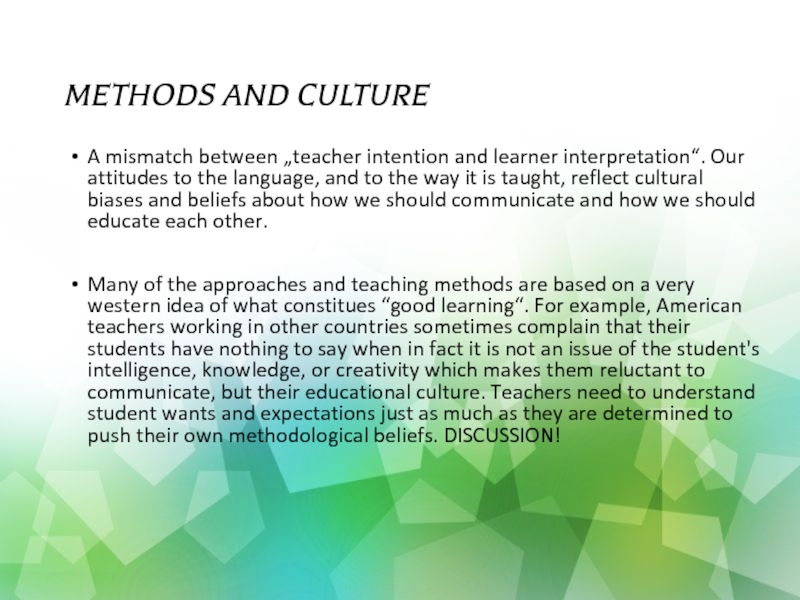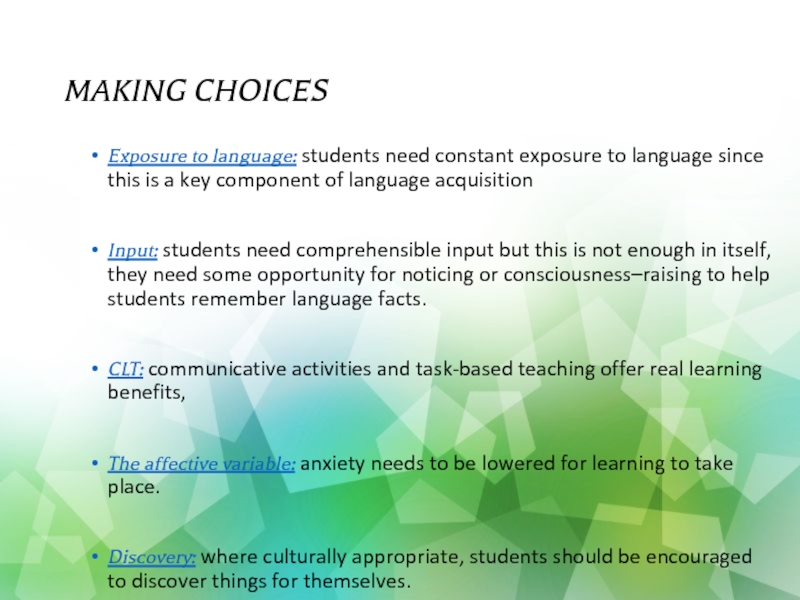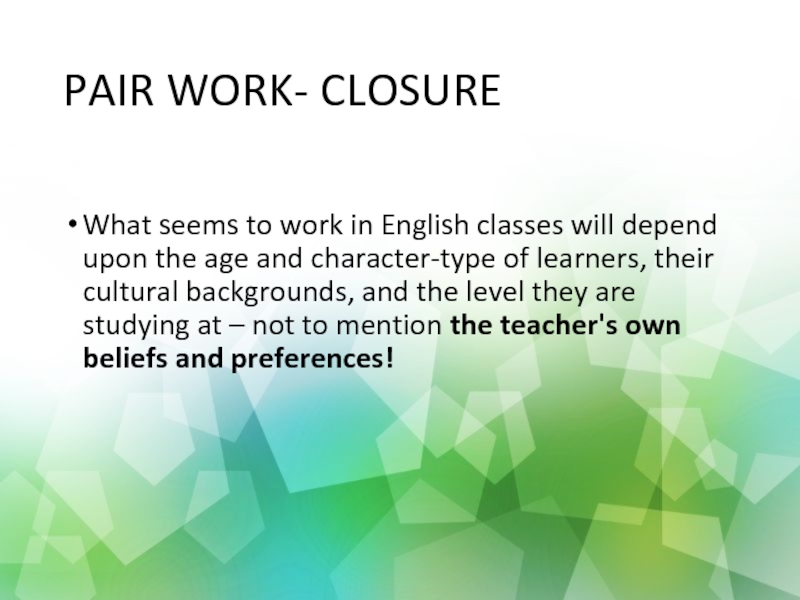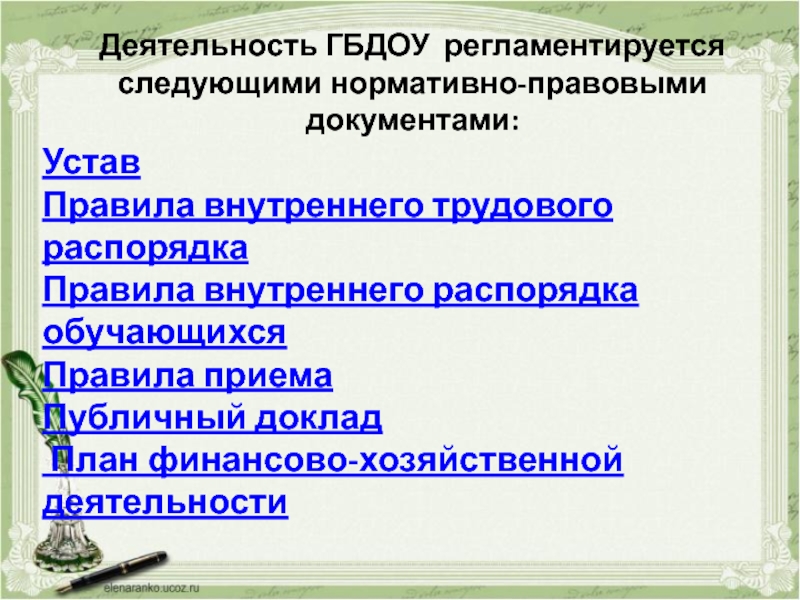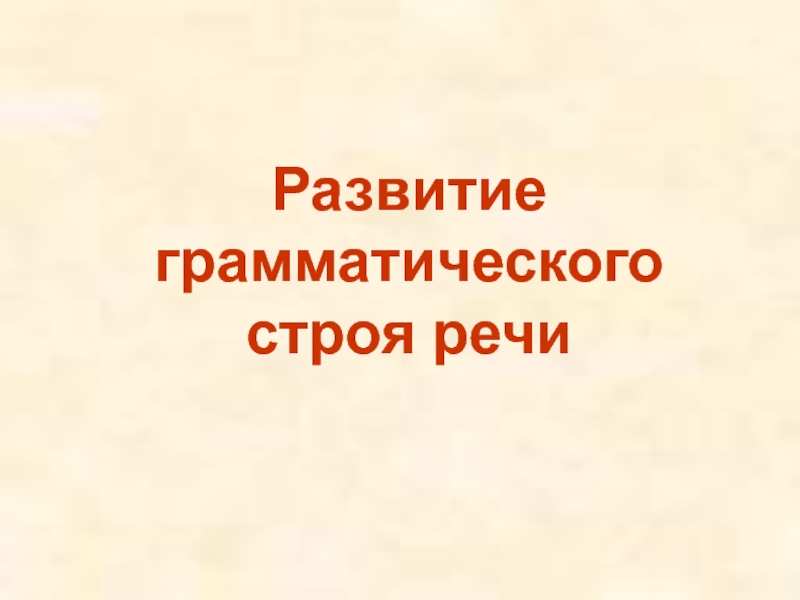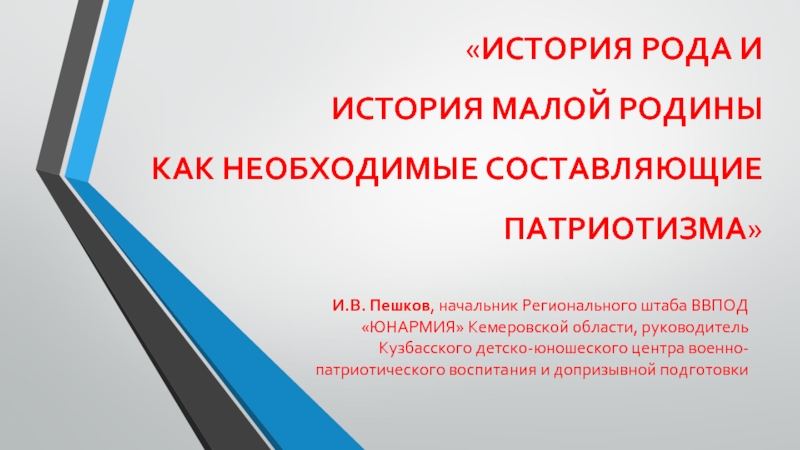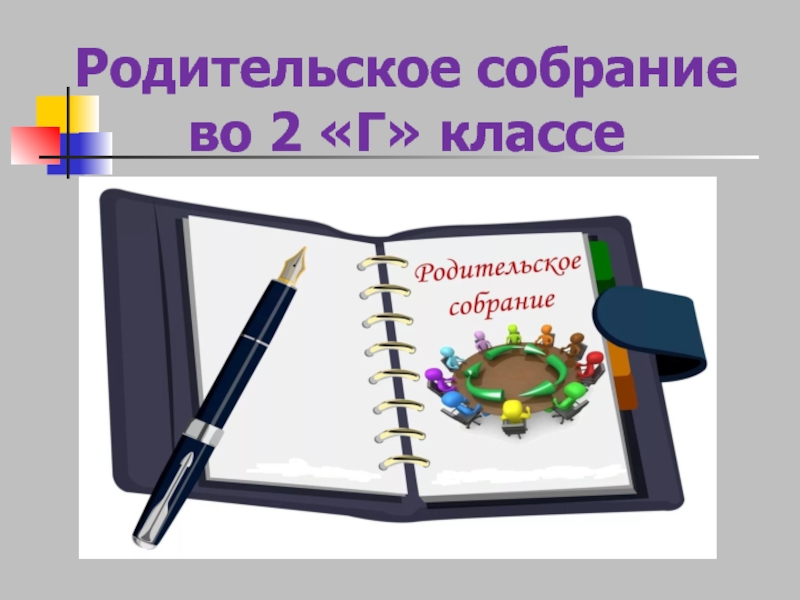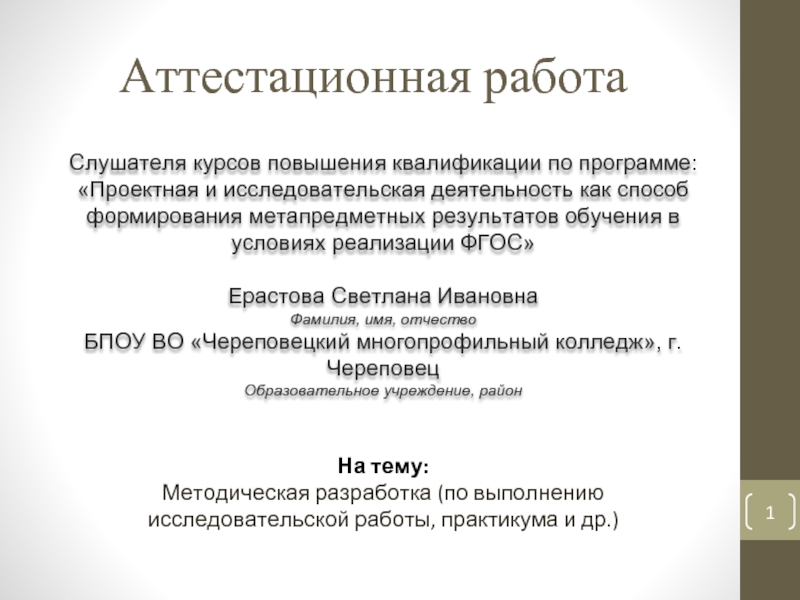- Главная
- Разное
- Дизайн
- Бизнес и предпринимательство
- Аналитика
- Образование
- Развлечения
- Красота и здоровье
- Финансы
- Государство
- Путешествия
- Спорт
- Недвижимость
- Армия
- Графика
- Культурология
- Еда и кулинария
- Лингвистика
- Английский язык
- Астрономия
- Алгебра
- Биология
- География
- Детские презентации
- Информатика
- История
- Литература
- Маркетинг
- Математика
- Медицина
- Менеджмент
- Музыка
- МХК
- Немецкий язык
- ОБЖ
- Обществознание
- Окружающий мир
- Педагогика
- Русский язык
- Технология
- Физика
- Философия
- Химия
- Шаблоны, картинки для презентаций
- Экология
- Экономика
- Юриспруденция
Methods and approaches in teaching english as a foreign language презентация
Содержание
- 1. Methods and approaches in teaching english as a foreign language
- 2. Approaches, methods, procedures, and techniques Approach :
- 3. Technique : a common technique when using
- 4. The Grammar – Translation Method This is
- 5. The Grammar – Translation Method Classes are
- 6. Audio-lingualism Audio-lingual methodology owes its existence to
- 7. Presentation, Practice, and Production A variation on
- 8. PPP and alternatives to PPP The PPP
- 9. ARC put forward by Jim Scrivener
- 10. OHE/III Michael Lewis claims that students should
- 11. ESA In the ESA model three components
- 12. The Communicative Approach The communicative approach
- 13. Non-communicative activities Communicative activities
- 14. Task-based learning (TBL) Popularised by prof. Prabhu,
- 15. Four methods These methods developed in the
- 16. 2. The Silent Way - the teacher
- 17. Georgi Lozanov physical surroundings and atmosphere of
- 18. Suggestopaedia Desuggestopedia/suggestopedia, the application of suggestion to
- 19. Techniques CLASSROOM SET-UP – the challenge for
- 20. Techiques BAROQUE MUSIC – it has a
- 21. The originator of TPR, James Asher,
- 22. Total Physical Response (TPR) This method is
- 23. PRINCIPLES 1. The students' understanding of the
- 24. HUMANISTIC TEACHING
- 25. THE LEXICAL APPROACH The lexical approach, discussed
- 26. METHODS AND CULTURE A mismatch between
- 27. MAKING CHOICES Exposure to language: students need
- 28. Grammar and lexis: showing how words combine
- 29. PAIR WORK- CLOSURE What seems to
Слайд 2Approaches, methods, procedures, and techniques
Approach : this refers to “theories about
Method : a method is the practical realization of an approach. Methods include various procedures and techniques as part of their standard fare.
Procedure : a procedure is an ordered sequence of techniques. A procedure is a sequence which can be described in terms such as first you do this, then you do that… Smaller than a method and bigger than technique.
Слайд 3Technique : a common technique when using video material is called
A term that is also used in discussions about teaching is “model” – used to describe typical procedures, usually for teachers in training. Such models offer abstractions of these procedures, designed to guide teaching practice.
Слайд 4The Grammar – Translation Method
This is a method that has been
At one time it was called Classical Method,since it was first used in the teaching of the classical languages,Latin and Greek.
Earlier in this century,it was used for the purpose of helping students read and appreciate foreign language literature.
Слайд 5The Grammar – Translation Method
Classes are taught in the students′ mother
Vocabulary is taught in the form of isolated word lists;
Elaborate explanations of grammar are always provided;
Reading of difficult text is begun early in the course of study;
Little attention is paid to the content of text,which are treated as exercises in grammatical analysis.
Слайд 6Audio-lingualism
Audio-lingual methodology owes its existence to the Behaviourist models of learning
Audio-lingualism relied heavily on drills like substitution to form these habits.
Habit-forming drills have remained popular among teachers and students, and teachers who feel confident with the linguistic restriction of such procedures
Слайд 7Presentation, Practice, and Production
A variation on Audio-lingualism in British-based teaching and
Слайд 8PPP and alternatives to PPP
The PPP procedure came under a sustained
Michael Lewis suggested that PPP was inadequate because it reflected neither the nature of language nor the nature of learning.
Jim Scrivener advanced what is perhaps the most worrying aspect of PPP,the fact that it only describes one kind of lesson;it is inadequate as a general proposal concerning approaches to language in the classroom.
In response to these criticism many people have offered variations on PPP and alternative to it: ARC, OHE/III, ESA.
Слайд 9ARC
put forward by Jim Scrivener
stands for Authentic use, Restricted use and
Communicative activity will demonstrate authentic use; elicted dialogue or guided writing will provoke restricted use of language by students; finally clarification language is that which the teacher and students use to explain grammar,give examples,analyse errors,elict or repeat things.
Слайд 10OHE/III
Michael Lewis claims that students should be allowed to Observe (read
Слайд 11ESA
In the ESA model three components will usually be present in
E stands for Engage - students have to be engaged emotionally
S stands for Study
A stands for Activate - any stage at which students are encouraged to use all and/or any of the language they know
Слайд 12The Communicative Approach
The communicative approach or Communicative Language Teaching (CLT) is
Слайд 13
Non-communicative activities Communicative activities
The communication continuum
No communicative desire
No communicative purpose
Form not
One language item only
Teacher intervention
Materials control
A desire to communicate
A communicative purpose
Content not form
Variety of language
No teacher intervention
No materials control
Слайд 14Task-based learning (TBL)
Popularised by prof. Prabhu, who speculated that students were
Three basic stages of TBL according to Jane Willis:
1. Pre task (introduction to topic and task)
2. Task cycle (task, planning and report)
3. Language focus (analysis, practice).
Слайд 15Four methods
These methods developed in the 1970s and 1980s as humanistic
1. Community Language Learning
- students sitting in a ciricle
- a counsellor or a knower
- making the utterance
Слайд 16 2. The Silent Way
- the teacher says as little
as
- interacting with physical
objects, especially with
Cuisenaire rods
- pointing to a phonemic chart
Слайд 17Georgi Lozanov
physical surroundings and atmosphere of the classroom are of a
the reason for our inefficiency is that we set up psychological barriers to learning: we fear that we will be unable to perform, that we will be limited in our ability to learn, that we will fail;
one result is that we do not use the full mental powers that we have and according to Lozanov, we may be using only 5 – 10% of our mental capacity
In order to make better use of our reserved capacity, the limitations we think we have need to be ‘desuggested’
parent-children (teacher-student) relationship
three main parts: oral review, presentation and discussion, concert session (listening to classic music)
3. Suggestopaedia
Слайд 18Suggestopaedia
Desuggestopedia/suggestopedia, the application of suggestion to pedagogy, has been developed to
One of the ways the students’ menatal capacities are stimulated is through integration of the fine arts.
Слайд 19Techniques
CLASSROOM SET-UP – the challenge for the teacher is to create
PERIPHERAL LEARNING – this technique is based upon that we percieve much more in our environment than that to which we consciously attend. It is claimed that, by putting poster containing grammatical information about the target language on the classroom walls, students will absorb the necessary facts effortlessly.
POSITIVE SUGGESTION – it’s the teacher resposibility to orchestrate the suggestive factors in a learning situation, thereby helping students break down the barriers to learning that they bring with them. Teachers can do this through direct and indirect means.
Слайд 20Techiques
BAROQUE MUSIC – it has a specific rhythm and a pattern
Слайд 21
The originator of TPR, James Asher, worked from the premise that
Chlidren learn language from their speech through the forms of commands, then adults will learn best in that way too.
In responding to commands students get a lot of comprehensible input, and in performing physical actions they seem to echo the claims of Neuro-linguistic programming that certain people benefit greatly from kinaesthetic activity.
4. Total Physical Response (TPR)
Слайд 22Total Physical Response (TPR)
This method is developed to reduce stress people
1. Using commands to direct behaviour
2. Role reversal
3. Action sequence
Слайд 23PRINCIPLES
1. The students' understanding of the target language should be developed
2. Students can initially learn one part of the language rapidly by moving their bodies.
3. Feelings of success and low anxiety facilitate learning.
4. Language learning is more effective when it is fun.
5. Students are expected to make errors when they first begin speaking. Teachers should be tolerant of them. Work on the fine details of the language should be postponed until students have become somewhat proficient.
Слайд 24HUMANISTIC TEACHING
Humanistic teaching has found a greater acceptance at the
Such exercises have a long history and owe much to a work from 1970s called Caring and Sharing in the Foreign Language Classroom by Gertrude Moscowitz in which many activities are designed to make students feel good and remember happy times while, at the same time, they practise grammar items.
When I was a child my favourite food was hamburger, or When I was a child my favourite relative was my uncle. I was shown how to crawl. I pushed out of my mother’s womb.
Слайд 25THE LEXICAL APPROACH
The lexical approach, discussed by Dave Willis and popularised
A lexical approach would steer us towards the teaching of phrases which show words in combination. Thus, instead of teaching will for the future, we might instead have students focus on its use in a series of archetypical utterances such as I'll give you a ring.
Слайд 26METHODS AND CULTURE
A mismatch between „teacher intention and learner interpretation“.
Many of the approaches and teaching methods are based on a very western idea of what constitues “good learning“. For example, American teachers working in other countries sometimes complain that their students have nothing to say when in fact it is not an issue of the student's intelligence, knowledge, or creativity which makes them reluctant to communicate, but their educational culture. Teachers need to understand student wants and expectations just as much as they are determined to push their own methodological beliefs. DISCUSSION!
Слайд 27MAKING CHOICES
Exposure to language: students need constant exposure to language since
Input: students need comprehensible input but this is not enough in itself, they need some opportunity for noticing or consciousness–raising to help students remember language facts.
CLT: communicative activities and task-based teaching offer real learning benefits,
The affective variable: anxiety needs to be lowered for learning to take place.
Discovery: where culturally appropriate, students should be encouraged to discover things for themselves.
Слайд 28Grammar and lexis: showing how words combine together and behave both
Methodology and culture: teaching methodology is rooted in popular culture. Therefore, compromise may be necessary.
Pragmatic eclecticism does not just mean that “anything goes“. On the contrary, students have a right to expect that they are being asked to do things for a reason, and that their teacher has some aim in mind which he or she can, if asked, articulate clearly. Teaching plans should always be designed to meet an aim or aims.
